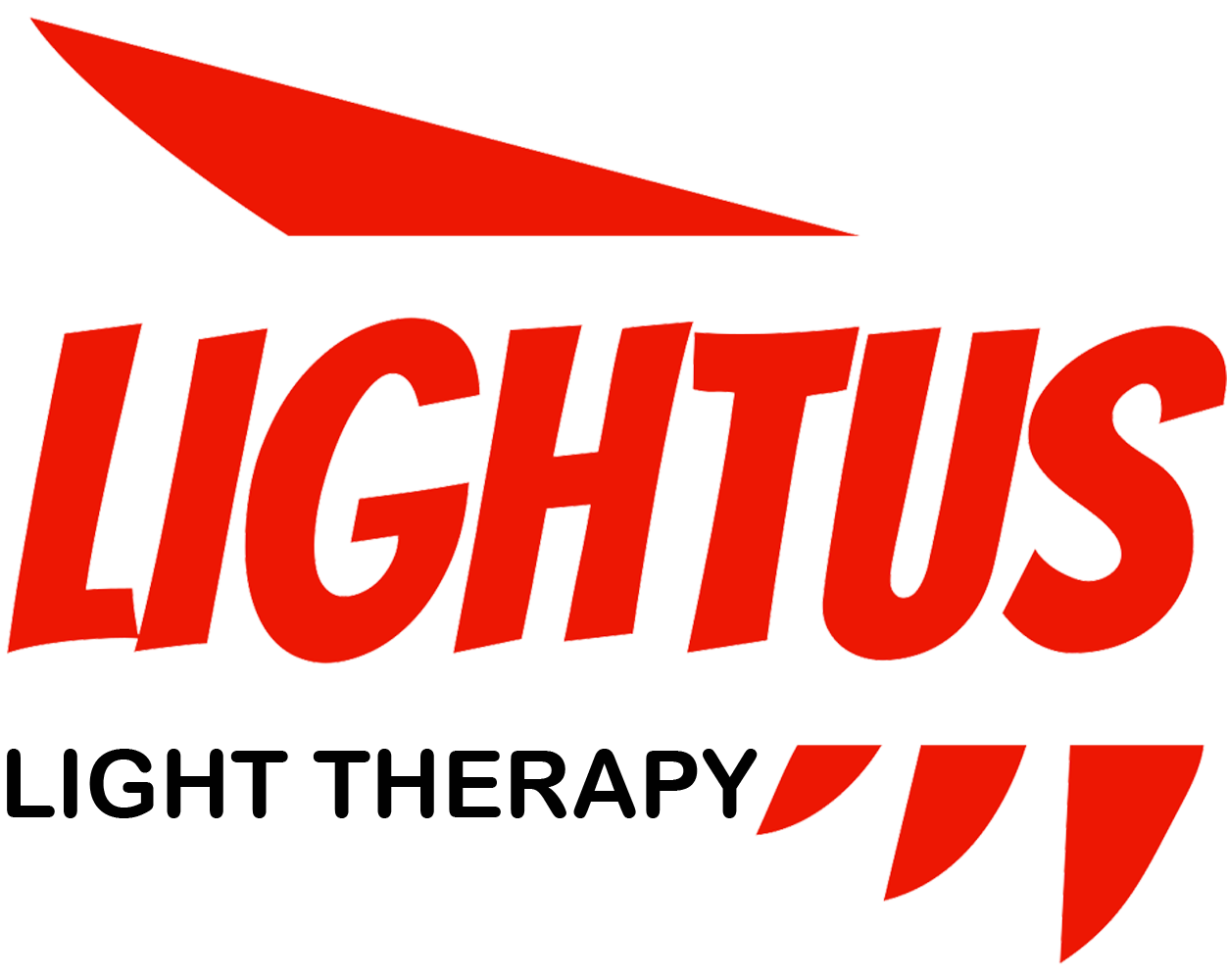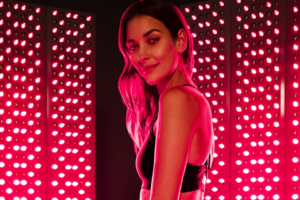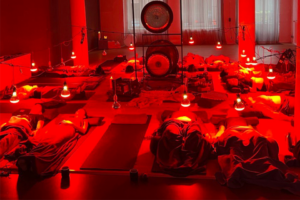The Ultimate Guide to Red Light Therapy: Benefits, Safety, and How It Works

Red light therapy has gained significant attention in recent years as a potential treatment for various health conditions. This comprehensive guide will explore the science behind red light therapy, its potential benefits, safety considerations, and how to use it effectively. Whether you’re new to this innovative treatment or looking to deepen your understanding, this article will provide valuable insights into the world of red light therapy.
Table of Contents
What is Red Light Therapy and How Does It Work?
Red light therapy, also known as photobiomodulation therapy or low-level light therapy, is a non-invasive treatment that uses low-level wavelengths of red and near-infrared light to stimulate cellular function. This therapy works by delivering light energy to the body’s cells, particularly the mitochondria, which are responsible for producing energy within cells.The science behind red light therapy is based on the principle that specific wavelengths of light can penetrate the skin and be absorbed by cells, triggering various biological processes. These processes can include:
- Increased ATP (adenosine triphosphate) production
- Enhanced cellular repair and regeneration
- Improved blood circulation
- Reduced inflammation
- Stimulation of collagen production
Red light therapy uses low-level light to treat various conditions, ranging from skin issues to muscle pain and even cognitive function. Unlike UV light, which can be harmful to the skin, red and near-infrared light are generally considered safe and do not cause damage to the skin or underlying tissues.
Is Red Light Therapy Safe? Understanding the Potential Risks
One of the most common questions about red light therapy is whether it’s safe. Generally, red light therapy is considered safe when used as directed. Unlike UV light, which can increase the risk of skin cancer, red light therapy does not use ultraviolet light and is not known to cause skin damage or increase cancer risk.However, as with any treatment, there are some potential risks and side effects to be aware of:
- Eye strain: Looking directly at bright lights can cause eye discomfort, so it’s essential to use protective eyewear during treatment.
- Temporary redness or warmth: Some people may experience mild redness or warmth in the treated area, which typically subsides quickly.
- Headaches: In rare cases, some users have reported headaches after treatment.
- Interactions with medications: Certain medications can increase sensitivity to light, so it’s important to consult with a healthcare provider before starting red light therapy if you’re taking any medications.
It’s worth noting that red light therapy is not recommended for individuals with a history of skin cancer or those taking photosensitizing medications without first consulting a healthcare professional.
The Potential Benefits of Red Light Therapy: What Does the Science Say?
Research into red light therapy has shown promising results for various health conditions. While more studies are needed to fully understand its efficacy, here are some potential benefits that have been observed:
- Skin Health: Red light therapy may improve skin health by:
- Reducing wrinkles and fine lines
- Improving skin tone and texture
- Accelerating wound healing
- Reducing acne and inflammation
- Pain Relief: Studies have found that red light therapy may help alleviate:
- Chronic pain conditions
- Joint pain and arthritis
- Muscle soreness and injuries
- Hair Growth: Some evidence suggests that red light therapy may stimulate hair growth and slow hair loss.
- Improved Sleep: Red light therapy may help regulate circadian rhythms and improve sleep quality.
- Enhanced Athletic Performance: Athletes may benefit from red light therapy through:
- Reduced muscle fatigue
- Improved recovery times
- Increased endurance
- Cognitive Function: Preliminary research indicates that red light therapy may have neuroprotective effects and could potentially improve cognitive function.
- Mood and Mental Health: Some studies suggest that red light therapy may help alleviate symptoms of depression and anxiety.
Unable to render imageRed light therapy devices for home use

How to Use Red Light Therapy: Tips for Effective Treatment
To get the most out of red light therapy, consider the following tips:
- Choose the right device: Select a red light therapy device that suits your needs and has been clinically tested.
- Follow the manufacturer’s instructions: Each device may have specific guidelines for use, including treatment duration and distance from the light source.
- Be consistent: Regular treatments are typically more effective than sporadic use.
- Protect your eyes: Always wear protective eyewear during treatment to prevent eye strain.
- Start slowly: Begin with shorter treatment times and gradually increase as your body adjusts to the therapy.
- Target specific areas: Focus the light on the areas you want to treat for best results.
- Combine with other treatments: Red light therapy can be used in conjunction with other skincare or wellness routines for enhanced benefits.
Red Light Therapy at Home: What You Need to Know
With the increasing popularity of red light therapy, many people are opting to use red light therapy devices at home. Here are some factors to consider when using red light therapy at home:
- Device quality: Invest in a high-quality device from a reputable manufacturer to ensure safety and efficacy.
- Wavelength and power output: Look for devices that offer the appropriate wavelengths (typically 630-660nm for red light and 810-850nm for near-infrared) and sufficient power output.
- Treatment area: Consider the size of the area you want to treat when choosing a device. Larger panels may be more suitable for full-body treatments, while smaller devices are better for targeted areas.
- Convenience: Consider factors like portability, ease of use, and storage when selecting a home device.
- Cost: While professional treatments can be expensive, home devices can be a cost-effective long-term solution.
- Safety features: Look for devices with built-in safety features like automatic shut-off timers and cooling systems.
The Science Behind Red Light Therapy: Understanding the Mechanism of Action
To fully appreciate the potential of red light therapy, it’s essential to understand the underlying science. The mechanism of action for red light therapy involves several key processes:
- Photoacceptor activation: Specific molecules within cells, called photoacceptors, absorb the light energy. The primary photoacceptor in red light therapy is cytochrome c oxidase, an enzyme in the mitochondria.
- ATP production: The absorbed light energy stimulates the production of ATP, the primary energy source for cells.
- Nitric oxide release: Red light therapy can cause the release of nitric oxide, which improves blood flow and reduces inflammation.
- Gene expression: Light therapy can influence gene expression, potentially promoting the production of proteins involved in cellular repair and regeneration.
- Oxidative stress reduction: Red light therapy may help reduce oxidative stress by neutralizing free radicals.
Understanding these processes helps explain why red light therapy may have such diverse effects on the body, from skin health to pain relief and beyond.
Red Light Therapy vs. Other Light Treatments: What’s the Difference?
While red light therapy has gained popularity, it’s not the only light-based treatment available. Here’s how it compares to other light therapies:
- Blue light therapy: Used primarily for acne treatment, blue light targets bacteria on the skin’s surface.
- Green light therapy: May help with pigmentation issues and skin tone.
- Yellow light therapy: Often used for skin rejuvenation and to reduce redness.
- Infrared light therapy: Uses longer wavelengths that penetrate deeper into the body, often used for pain relief and healing.
- UV light therapy: Used to treat certain skin conditions but carries risks of skin damage and increased cancer risk.
- Photodynamic therapy: Combines light with a photosensitizing agent to treat certain skin conditions and some types of cancer.
Red light therapy stands out for its combination of skin benefits and deeper tissue effects, as well as its generally safe profile compared to some other light treatments.
Frequently Asked Questions About Red Light Therapy
Can red light therapy cause cancer?
No, red light therapy does not cause cancer. Unlike UV light, which can damage DNA and increase cancer risk, red and near-infrared light do not have this effect. However, individuals with a history of skin cancer should consult a healthcare provider before using red light therapy.
How often should I use red light therapy?
The frequency of red light therapy sessions can vary depending on the condition being treated and the device being used. Generally, treatments range from 3-5 times per week, with each session lasting 10-20 minutes. Always follow the manufacturer’s guidelines or your healthcare provider’s recommendations.
Can I use red light therapy with other skincare products?
Yes, red light therapy can be used in conjunction with many skincare products. However, it’s best to apply skincare products after your red light therapy session to allow the light to penetrate the skin without interference.
Is red light therapy FDA-approved?
The FDA has cleared several red light therapy devices for various uses, including pain relief, hair loss treatment, and acne reduction. However, it’s important to note that “FDA-cleared” is different from “FDA-approved,” and the specific claims for each device may vary.
Can red light therapy help with weight loss?
While some studies have shown promising results for red light therapy in reducing fat cells, more research is needed to confirm its effectiveness for weight loss. Red light therapy should not be considered a substitute for a healthy diet and regular exercise.
Conclusion: The Future of Red Light Therapy
Red light therapy represents an exciting frontier in non-invasive health treatments. As research continues to evolve, we may discover even more potential applications and benefits of this innovative therapy. While red light therapy shows promise for a wide range of conditions, it’s important to approach it with realistic expectations and to use it as part of a comprehensive health and wellness strategy.Key takeaways:
- Red light therapy uses low-level wavelengths of red and near-infrared light to stimulate cellular function
- It is generally considered safe when used as directed
- Potential benefits include improved skin health, pain relief, and enhanced athletic performance
- Home devices offer a convenient and cost-effective option for regular treatments
- More research is needed to fully understand the long-term effects and optimal treatment protocols
As with any health treatment, it’s always best to consult with a healthcare professional before starting red light therapy, especially if you have any pre-existing health conditions or concerns.






